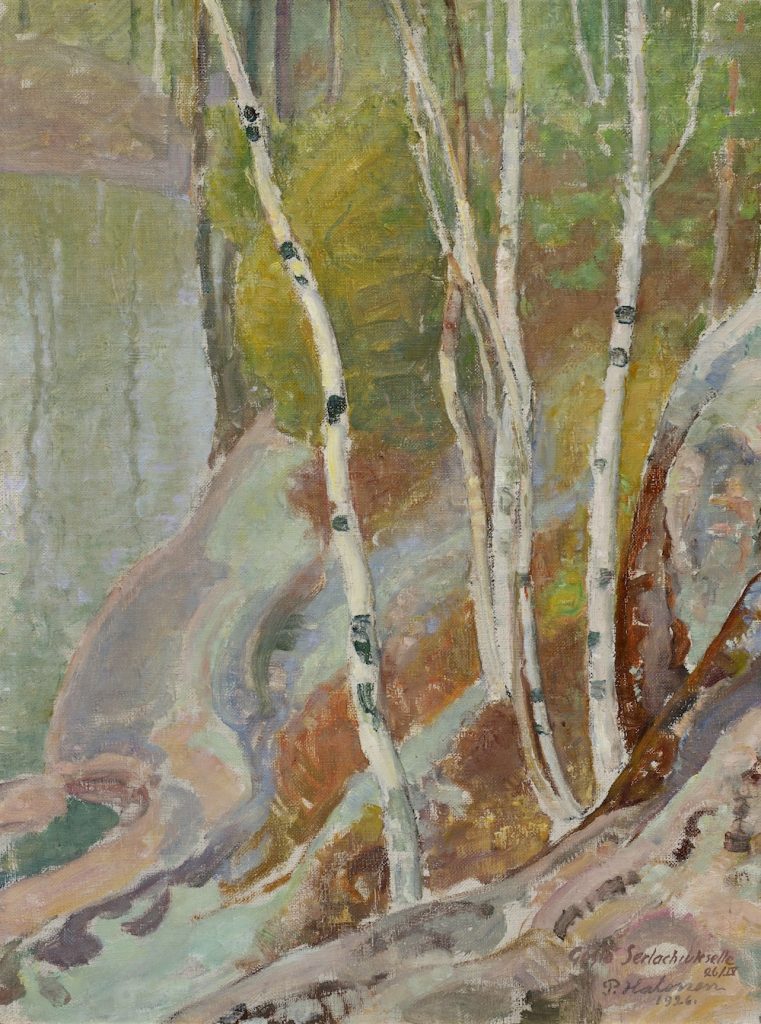The Spring in Pekka Halonen’s art
“I often feel as if I had the Louvre or the world’s greatest art treasures outside my doorsteps.”
Spring fever – does it sound familiar? Pekka Halonen (1865–1933) certainly had it. He is one of Finland’s best loved artists in depicting all four seasons typical to the country. The master’s son Antti Halonen has said, contrary to the popular belief, that spring indeed was the artist’s favorite season. Nevertheless, most of his paintings were winter-themed – they just happened to come into existence, after all, winter is the longest of all seasons and Halonen had a large family to support. So, what else could an artist do but paint.
In the spring of 1897, Halonen wrote in a letter from Italy to Finland: “Yes, there is a beautiful and sweet smell of flowers here, but it is not the same fragrance that we have in our spring. I miss the one that rips and takes me on. I would accept all the winds, gusts, and sleet, if only I could be at home in Finland. I have the instinct of Finnish Lapphund”. This is how a Finn’s longing for home manifested itself. Halonen’s words offer food for thought for us who forget the miracle of spring and start to wait for the summer as soon as the light hits the ground.
Many spring-themed artworks are comprised in the Gösta Serlachius Fine Arts Collection. Themes of metamorphosis are present in Pekka Halonen’s spring landscapes, such as A Lake Shore in the Spring (1926) and Flooding in Springtime (1916). The lake has started to melt, the streams are babbling and the scents of the first blossoms waft in the air. The colors are brownish, the shapes are organic, and the branches appear to be dancing. Halonen painted outdoors in summer, winter and, of course, spring regardless of the weather, and achieved a dazzling ability to depict the changing seasons. In Halonen’s paintings, the spring is a living, organic process. So, the stiffness often associated to painting as a medium is absent. Everything is one: in flow, melting, evaporating and growing.
The spring landscape, with its attributes of dance and lightness, have not always been appreciated as a form of Finnish mental landscape. During Pekka Halonen’s time, the patriotic mindset emphasized majestic landscapes or hunting scenes with an element of danger and raised the nationalistic pride. Halonen had a subtle instinct to sense the small miracles of spring, the forest interior and mysticism. As an artist he looked at things from a close range. The artist summarizes: “I often feel as if I had the Louvre or the world’s greatest art treasures outside my doorsteps.” Halonen’s role as a promotor of the national landscape has been exceptionally significant and lasting over time.
For modern people, enjoying the four seasons seem almost self-evident, after all, the seasons are all around us in images from advertisements to mid-season jackets and rubber boots presented by the clothing industry. However, it is painting that has paved way for our aesthetic appreciation.
Let’s enjoy the spring! Let your senses feast and take a journey to the Serlachius Museums, where you can see old Finnish art at Serlachius Museum Gösta or walk around its English park, a little island or the forestry path to the Museum Gustaf.
The paintings presented in this text are not part of the current exhibition, although they belong to the collection.
Saara Heikkilä
Audience Coordinator
Sources:
Lindström, Aune. Pekka Halonen. Porvoo: WSOY, 1957.
Keravan taidemuseo. 1996. Pekka Halonen, erämaa elää: Maalauksia vuosilta 1890–1932. Helsinki: Sinebrychoff.
Bonsdorff, Anna-Maria von. Pekka Halonen: 1865–1933. Helsinki: Ateneumin taidemuseo, 2008.



